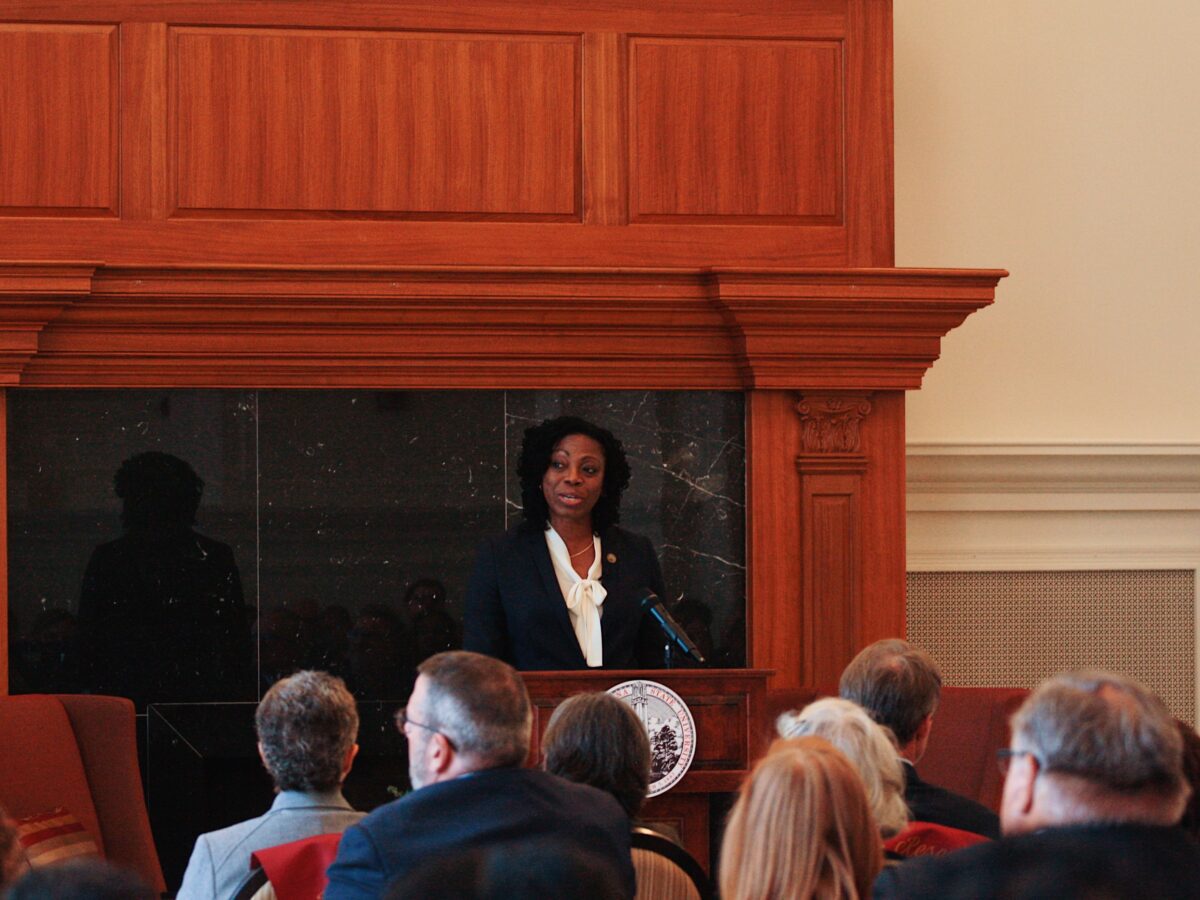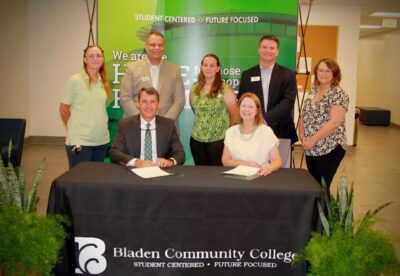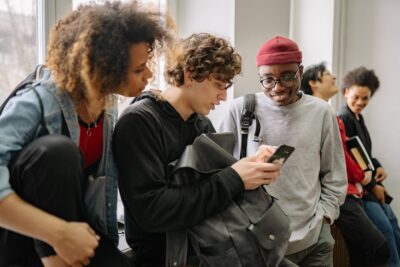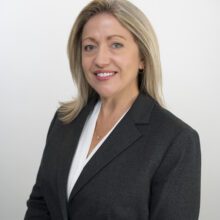
|
|
The following piece is a response to the 2023 Dallas Herring Lecture from Audrey J. Jaeger, W. Dallas Herring Professor of Community College Education at NC State’s College of Education and the founding executive director of the Belk Center for Community College Leadership and Research. Supporting all 58 of North Carolina’s community colleges, the Belk Center facilitates leadership development for community college leaders, generates actionable research and catalyzes change by convening statewide and national partners through events like the annual Dallas Herring Lecture. Dr. Falecia Williams, president of Prince George’s Community College, delivered this year’s lecture, “Dare to be Extraordinary: Transforming the Structure of How We Work.”
Change is nothing if not disruptive. In higher education, especially, change tends to disturb our foundations, sharpen our weaknesses and accentuate systemic inequities. Whether it’s economic volatility or an unprecedented pandemic, change can leave our institutions, our leadership teams, and most importantly, our students, vulnerable.
What we often fail to realize, though, is that change gives us a choice. Will we sit back and hope for the best? Will we surrender in defeat and accept the inevitable? Will we focus on damage control and maintaining the status quo? Or will we seize the opportunity handed to us to drive long-lasting transformation?
That’s the question that Dr. Falecia Williams, president of Prince George’s Community College (PGCC) in Largo, Maryland, raised for community college leaders across the state and around the nation at this year’s Dallas Herring Lecture. Change, she insisted, can be a catastrophe or a catalyst – the choice is ours.
Putting ourselves under the microscope
During the height of the COVID-19 pandemic, when Williams first joined PGCC as president, the college was confronted with an issue it could not ignore: dismal student outcomes. Namely, PGCC ranked in the bottom third of community colleges in Maryland for student success measures related to retention, progression and completion. This was not due to a lack of concern to improve these outcomes – in fact, most everyone Williams talked to expressed a genuine desire, and made earnest efforts, to drive positive change. Still, these endeavors were not producing the intended results.
According to Williams, the crossroads moment of the pandemic provided PGCC with an opportunity to ask “why?” and examine themselves more closely. They didn’t bury their heads in the sand; instead, they put themselves under the microscope.
They looked at everything. Their deficits, their challenges, their untapped potential and their unique assets. They didn’t resort to deficit thinking, but strategic thinking – looking at every facet of their institution to develop a comprehensive, informed view of student outcomes and determine a path forward. Moreover, they utilized everything – including scholarly literature, internal feedback and resources from local and national partners – to examine their institution from different angles. Rather than closing themselves off to feedback, they opened the door – and opened it wide – to embrace relevant ideas and information from a variety of sources.
J.B. Buxton, president of Durham Technical Community College and one of the lecture respondents, reminded listeners that all community college leaders, in North Carolina and beyond, have this same opportunity to take a look in the mirror. In fact, they must do this if they hope to drive community transformation, develop talent and meet local workforce needs. Fulfilling this historic mission requires a commitment to ongoing reform through rigorous, comprehensive self-examination. When external change in our communities is inevitable, driving internal change is essential.
Rethinking proximity and accessibility
In addition to examining their institutions, Williams called for community college leaders to reexamine their concept of accessibility. In recent years, community colleges have begun to grasp the reality that their classrooms, initiatives and programs are only as powerful as they are accessible. To that end, many have taken great strides to increase access and remove barriers in their communities. In North Carolina, that realization has led us to focus our efforts on physical proximity. We strive to have a community college within 30 miles of every North Carolina resident – because if we hope to equip all learners across our state, we need to ensure there are high-quality resources and programs close to them.
As Williams reminded listeners, however, putting a building nearby is not enough. At PGCC, they recognized that despite having five centers across their service district, few residents were utilizing them. Most opted to travel a longer distance to access preferred programs offered at the main campus – or they chose not to enroll at all.
Putting buildings in close proximity to learners is essential for increasing access – but it means very little unless those buildings make it easier for students to pursue their chosen pathways. We cannot underestimate the value of proximity, but let’s not forget that it’s the opportunities within, not the buildings themselves, that make all the difference. As Dallas Herring once remarked, “It is not enough…that the door be left ajar at the schoolhouse. It is what goes on within that really matters.”
Shelley White, president of Haywood Community College, demonstrated powerfully in her lecture response why proximity matters. In rural communities, in particular, community colleges serve as anchors – and they hold transformative power in times of change and crisis. Undoubtedly, it is their longitude and latitude that make this so. When they are visible and within reach, their community can count on them. However, it’s the resources within – and not simply the bricks without – that determine their ability to show up in the ways they’re needed most.
Investing in people and partnerships
Finally, the Dallas Herring Lecture highlighted that community colleges’ ability to drive transformation in a rapidly changing world is directly proportional to their investment in people and partnerships. Namely, community colleges that provide professional development for faculty members and build partnerships – at the local, regional and national levels – are better positioned to uplift their communities and prepare students for graduation, transfer and the workforce.
To that end, PGCC is making efforts to train faculty in culturally-responsive practices and innovative, evidence-based teaching and learning techniques. They have developed a Teaching and Learning Center to increase access to professional development opportunities and resources for advancing student success. Here in North Carolina, we have taken this campus-based model to serve all 58 community colleges across the state through our Teaching and Learning Hubs.
Additionally, PGCC has focused on building strategic partnerships to help create innovative programs, expand experiential learning opportunities and develop competencies and skills for 21st-century workforce needs. The goal is for these partnerships to be mutually beneficial – providing local employers with a steady stream of talent and providing students with the credentials, certificates and degrees needed to succeed in today’s workforce.
Buxton, speaking from the urban perspective, reiterated that investments in people and partnerships allow community colleges to do what they are intended to: drive social and economic mobility in their regions. For that reason, he called urban community colleges to determine whether their faculty, staff, administrators, community and institutional partners truly reflect the diversity of their communities. If leadership drives transformation, then community colleges must ensure their people and partners understand and advocate for the varied needs and perspectives in the community.
White, speaking from the rural perspective, agreed that investments in people and partnerships are essential. When her community was hit with unexpected news that the local paper mill was shutting down – affecting 1,000 jobs in the workforce – Haywood Community College responded swiftly with job fairs, scholarship programs and new summer programs to support millworkers, their families and other community members impacted by the closure. Their ability to provide immediate support to this unexpected challenge depended entirely on their network of community partners – and the same is true for community colleges across the nation.
In closing
Education will always experience seismic shifts outside our control – and to be strong, effective leaders in an ever-changing world, we must be prepared for them. This does not require us to predict or minimize them, but it does require us to tackle them head-on. This year’s Dallas Herring Lecture reminded community college leaders of the principle of agency – that each of us holds the power to drive our own change to advance student success.
The challenges in public education are never-ending, but so too are the opportunities. Rather than buckling under the weight of change, we have the choice to examine our methods, rethink how we increase access and double down on our investments in leaders and partnerships. Each of these is an opportunity for us to produce extraordinary results and bring lasting transformation to our communities – which makes the disruption of change a blessing in disguise.
So when the boat is rocked, perhaps we can take it as a signal to rock it a little more. As Dallas Herring once said, “The boat needs rocking. Perhaps in that way we can get it off some of the subsurface sandbars that plague these waters.”
Recommended reading




